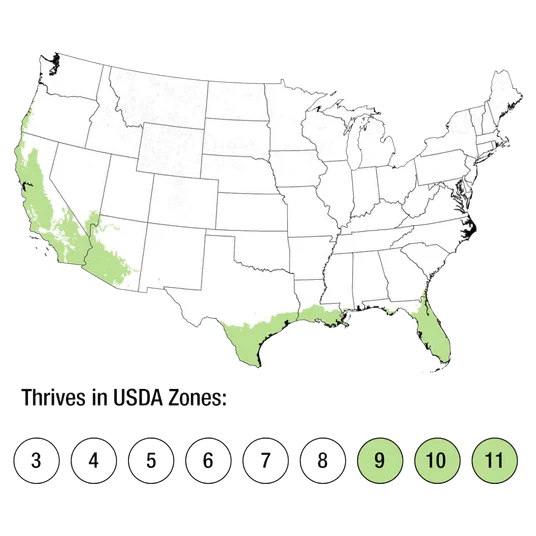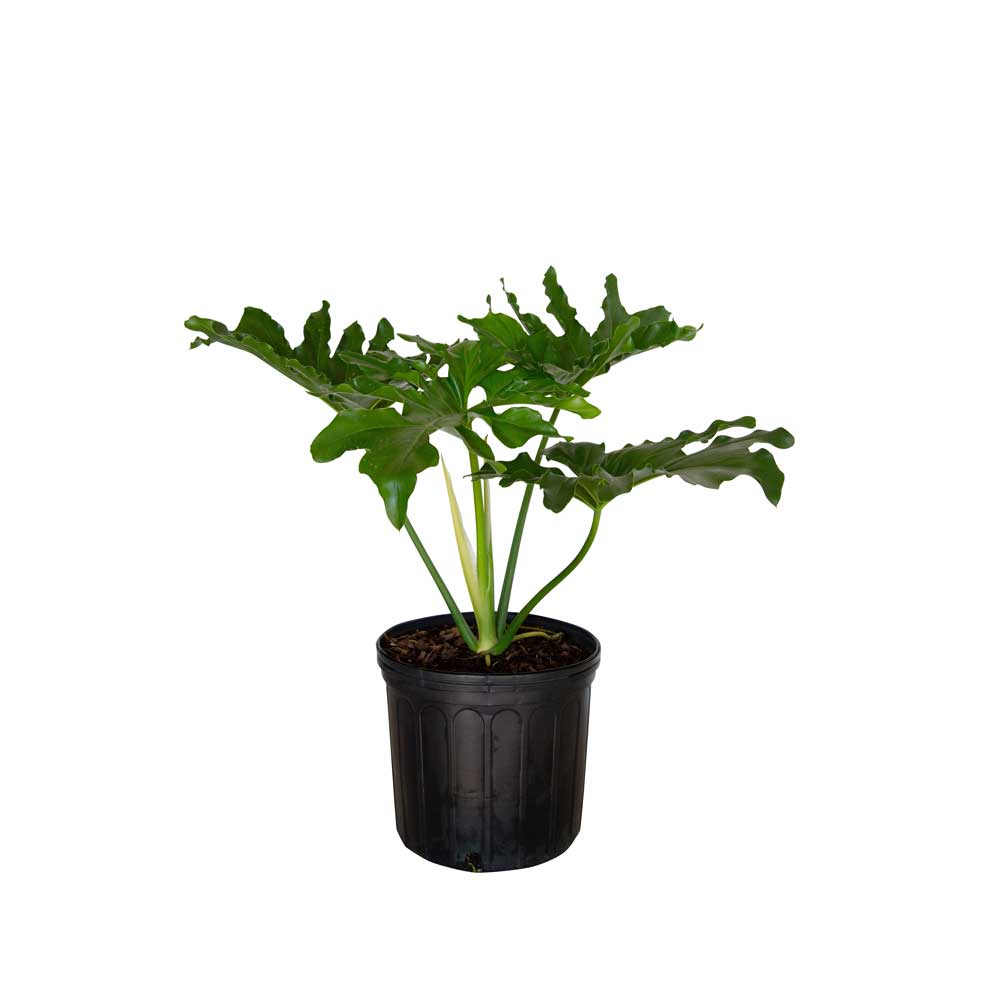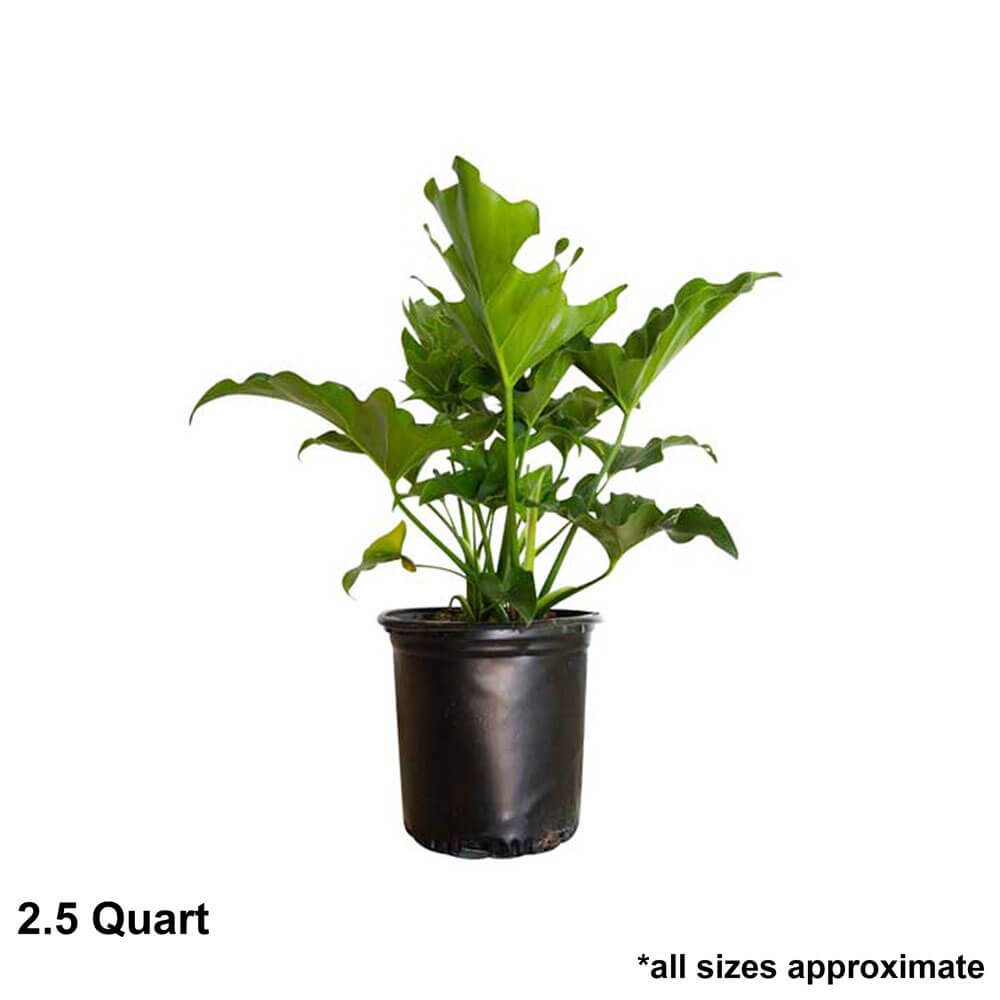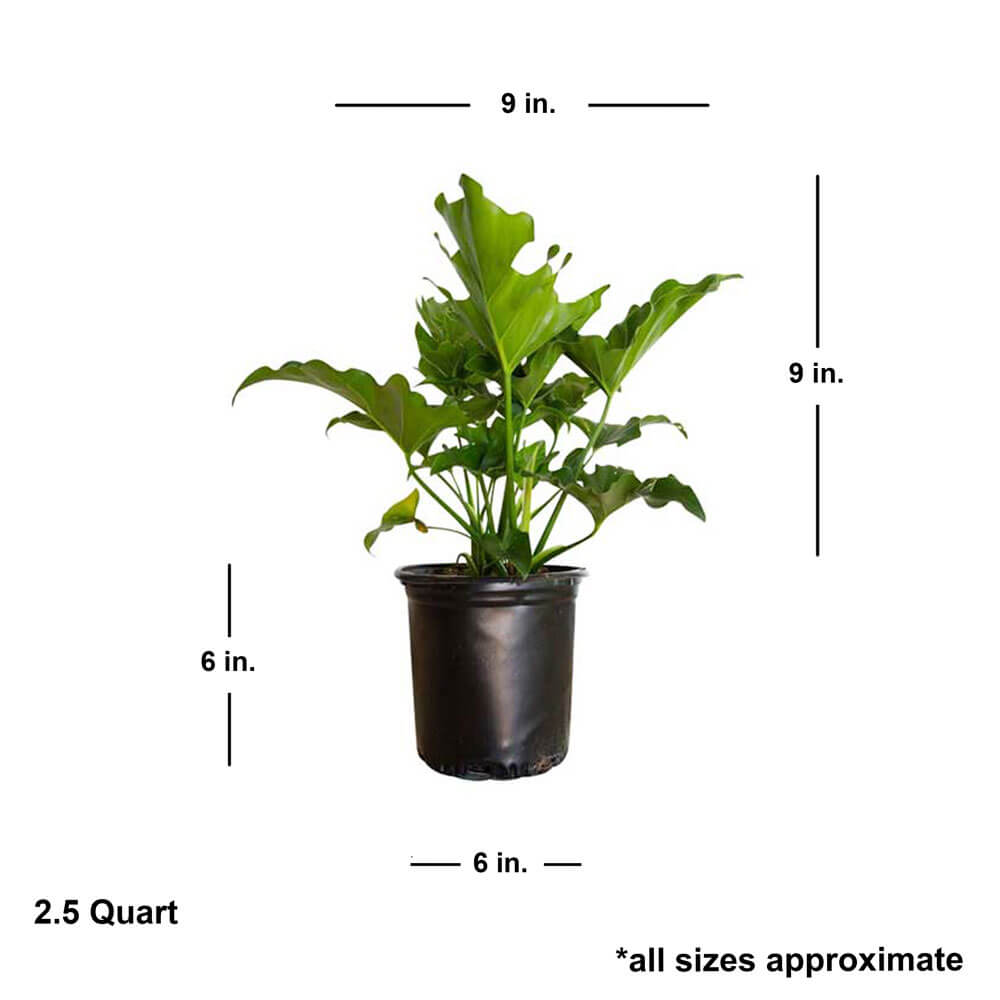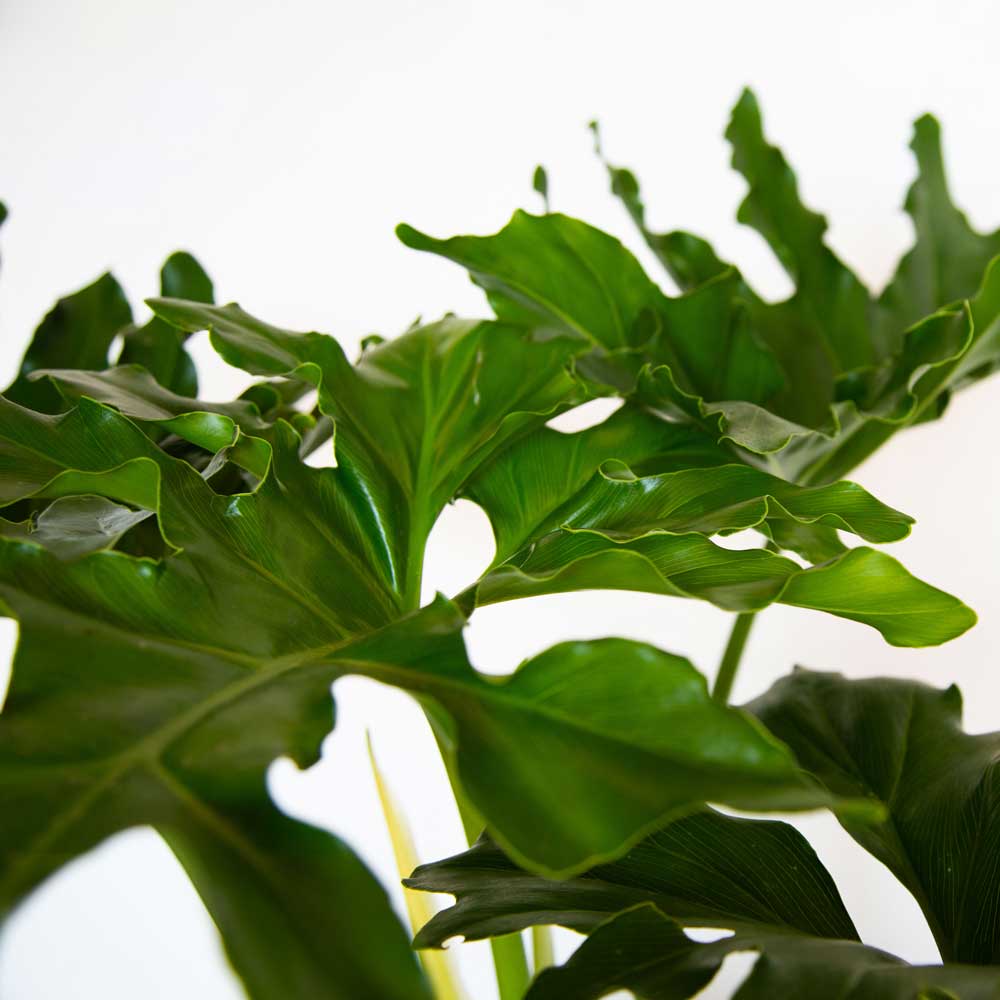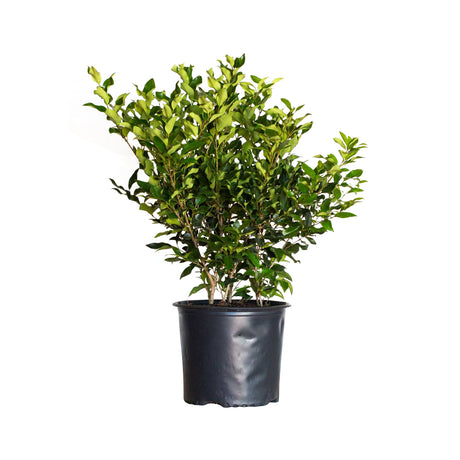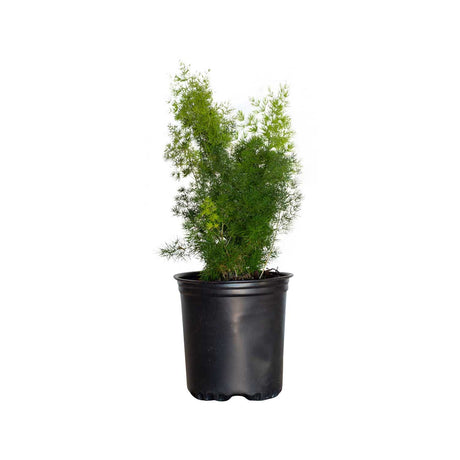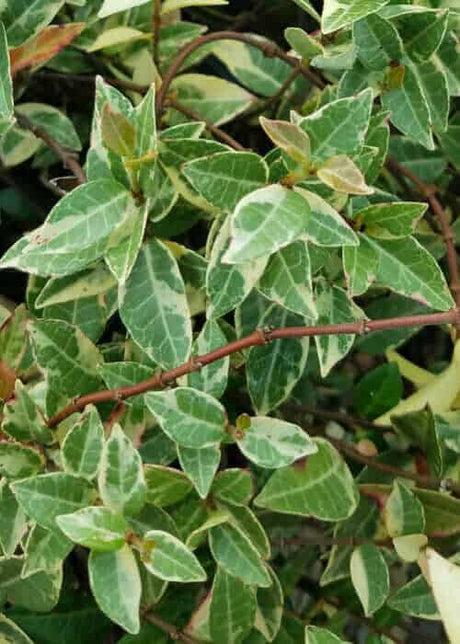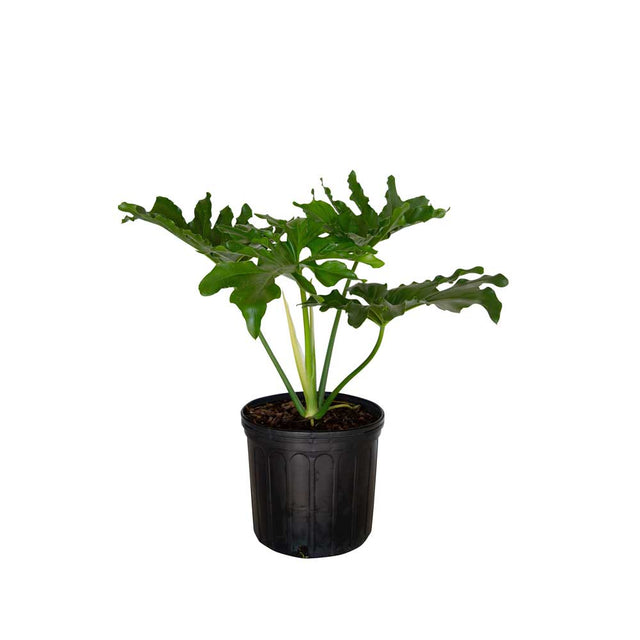Split Leaf Philodendron
Split Leaf Philodendron - 2.5 Quart is backordered and will ship as soon as it is back in stock.
Couldn't load pickup availability
Description
Description
The Split Leaf Philodendron is a well-known plant that is a new addition to the Plants by Mail catalog! These tropical houseplants are highly sought after because of their large, leafy foliage. So, if you are searching for a refreshing change - let us introduce you to your new favorite philodendron. Philodendron can be a slow-growing plant that will take 10 to 15 years to fully mature if planted indoors.
What's the difference between Split Leaf Philodendron and Monstera Deliciosa?
Split Leaf Philodendron is commonly mistaken for the monstera deliciosa or Swiss Cheese plant, but these are two different plants. They both are tropical plants with glossy green leaves that feature breaks in the foliage, but that's where the comparisons stop.
What Makes Split Leaf Unique?
The Split Leaf Philodendron has significant splits that extend out from the center and reach up - similar to fingers on an outstretched hand. The fringe of the split leaf ruffles slightly, giving the foliage a rolling appearance with lots of textures. There are also no swiss cheese holes in these leaves.
What Makes Monstera Deliciosa Different?
Swiss Cheese Plant has much larger foliage with no ruffled fringe and an almost leathery appearance. Each Leaf is much larger than the split leaf, and it features a mixture of both splits and swiss cheese-like holes in the foliage.
Where to Use Split Leaf Philodendrons
These tropical plants are members of the Araceae family and are native to the tropical and subtropical climates of Brazil, Bolivia, Argentina, and Paraguay.
Planting Outdoors
In subtropical and tropical climates, this plant is an aggressive grower outdoors. It can be grown outdoors in USDA Zones 9-11. When the philodendron plant is young, provide it with special care in the winter months during intense bouts of cold.
Fully mature split leaf plants can average 15 feet tall and 15 feet wide when grown outdoors. Give them ample space to spread their limbs, and this tropical plant will fill an area with a lush green texture.
Growing Indoors as Container Plant
Split Leaf has become a darling houseplant in social media over the past couple of years, and it's easy to see why. Split Leaf Philodendron grows at a far more modest rate indoors. They will be confined by the size of the room and their pot when used as a houseplant. They grow to a maximum height of 6 feet tall by 6 feet wide.
Choose a container that is right for your area. If you choose a smaller container, the root ball will be contristicted and the plant will have a far more modest growth habit. If you choose a pot that is larger, it will allow the root ball to get larger and the plant will become taller and fuller as a result.
Their characteristic ruffled leaves will remain a part of their growth indoors, but they do not get as large as they would outside. The leaves also can cleanse the air by removing formaldehyde.
Like other Philodendrons, the Split Leaf enjoys moist soil that is never soggy! Excessive moisture can quickly lead to root rot at the base of the plant.
Split Leaf Philodendron Care
Are Split Leaf Philodendrons Cold Hardy?
The split leaf philodendron plant is hardy in USDA Zones 9 - 11, making it a tropical plant that doesn't tolerate long bouts of cold. Therefore, you should give extra care to these plants in the winter months of USDA Zone 9 areas. Philodendron prefers high humidity and moderate temperatures year round.
Since these Split Leaf plants are commonly used as houseplants, you can bring your container inside any time to avoid less than ideal conditions.
Sunlight Requirements
Split-leaf philodendrons need lots of bright indirect light to thrive. However, don't plant them in full sun, or they may brown. Instead, provide them with lots of dappled or indirect sun to help them thrive. Low light conditions can lead to leggy plants reaching for the sun.
Planting Tips
Well-draining soil is essential for Split Leaf Philodendrons as they are highly susceptible to root rot. Use neutral pH soil mix for best results. This indoor plant enjoys moist but not soggy potting soil. Allow the top 2 inches of the soil to dry before watering again. Yellow to brown leaves is the number one sign of overwatering your root ball.
Cleaning this plant is a relatively easy task, but it is essential to the health of the foliage. You will want to routinely mist the leaves with water and wipe them down with a soft cloth.
Fertilizing is a great way to ensure that your split leaf remains healthy and thriving. When it comes time to fertilize, we recommend once a month from spring until fall.
Care & Use
Care & Use
Spacing Recommendations
Spacing Recommendations
-
Scientific Name
-
Hardiness Zone9, 10, 11
-
Sun ExposureFull Sun to Part Shade
-
Evergreen or DeciduousEvergreen
-
FeaturesHeat Tolerant
-
Feature ColorGreen
-
UsesHouseplant, Accent, Border, Coastal, Container, Foundation Planting, Hedge, Mass Planting, Woodland Garden
-
Water NeedsMedium
-
Bloom SeasonNone
Growing Zones : 9, 10, and 11
